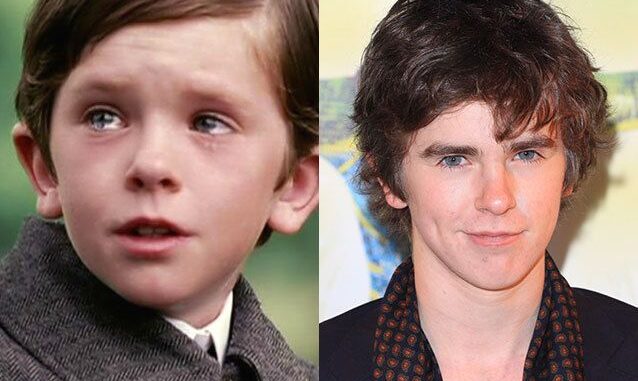
Marc Forster’s 2004 film “Finding Neverland” presented twelve-year-old Freddie Highmore with an extraordinary acting challenge: portraying Peter Llewelyn Davies, the child who inspired J.M. Barrie’s “Peter Pan” and whose skepticism toward imagination serves as the emotional core of the film. Highmore’s performance—his breakthrough role that would lead directly to his casting in “Charlie and the Chocolate Factory”—stands as one of cinema’s most nuanced portrayals of childhood grief. When examined alongside other significant cinematic depictions of children confronting loss, particularly Haley Joel Osment’s Cole Sear in M. Night Shyamalan’s “The Sixth Sense” (1999), Highmore’s achievement reveals much about the evolution of child performance in contemporary cinema and his unique emotional intelligence as a young actor.
Both films center on boys processing profound loss through supernatural or imaginative frameworks. In “The Sixth Sense,” Cole’s ability to see ghosts serves as both literal plot device and metaphor for confronting death. In “Finding Neverland,” Peter’s resistance to and eventual embrace of Barrie’s imaginative world parallels his struggle to accept his father’s death and prepare for his mother’s terminal illness. The performances differ significantly, however, in their approaches to expressing childhood trauma.
Osment’s deservedly acclaimed performance emphasizes the fear and isolation experienced by a child with an ability others cannot understand. His famous line “I see dead people” is delivered with palpable terror, his performance characterized by physical tension and watchful wariness. Highmore’s Peter, by contrast, manifests grief primarily through emotional withdrawal and premature assumption of adult perspectives and responsibilities. Where Cole’s trauma manifests as fear, Peter’s expresses itself as anger, particularly in his resistance to Barrie’s attempts to engage him through storytelling and imagination.

“What attracted me to the role was how complex Peter’s emotions are,” Highmore later reflected. “He’s not just sad about his father’s death and his mother’s illness—he’s angry that adults are trying to distract him with stories when he knows what’s really happening.” This insight informed Highmore’s remarkably mature performance, which eschews the more demonstrative emotional displays often expected from child actors in favor of subtle indicators of Peter’s internal struggles—rigid posture, guarded expressions, and moments of unexpected emotional breakthrough.
The pivotal scene in which Peter destroys the notebook containing the play he created with Barrie showcases the distinctive quality of Highmore’s approach. Rather than playing the moment with hysteria or obvious heartbreak, Highmore portrays Peter’s outburst as a complex mixture of grief, rage, and desperate assertion of control in an uncontrollable situation. Director Marc Forster later revealed that this scene required only one take—a testament to Highmore’s extraordinary emotional precision even at such a young age.
Both performances excel in portraying the particular isolation of children whose emotional experiences exceed adult expectations. Osment shows Cole’s loneliness as someone who sees what others cannot; Highmore portrays Peter’s alienation as the child who refuses the comforting fantasies others provide. Both performances suggest that children often process grief with greater awareness than adults recognize, but they differ in how this awareness manifests—Cole seeking understanding of his supernatural experiences, Peter resisting what he perceives as patronizing attempts to shield him from reality.
